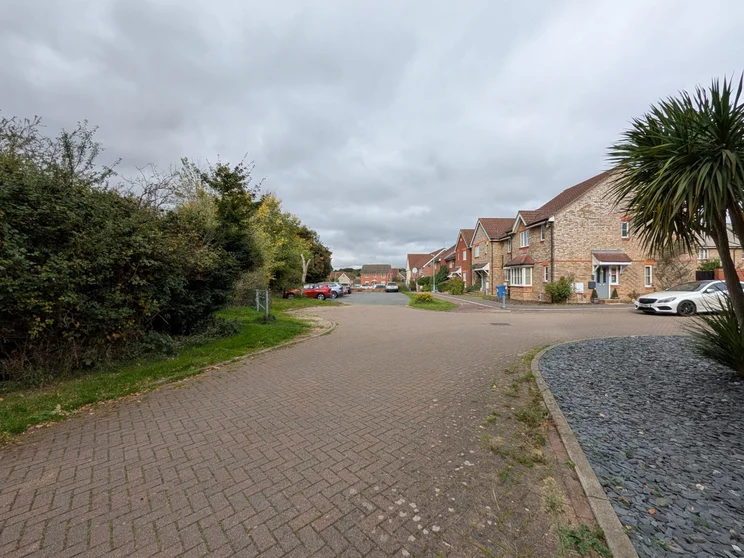To help us provide you with free impartial advice, we may earn a commission if you buy through links on our site. Learn more
- The first foldable to crack IP68
- Bright, colour-accurate displays
- Decent performance improvements
- Still bulky and heavy
- Battery life is mediocre
- Only Qi2 wireless charging
The Google Pixel 10 Pro Fold is a little late to the party. Not only does it arrive over a month later than the rest of the Pixel 10 series, it’s also the last foldable smartphone release of 2025 – both the Samsung Galaxy Z Fold 7 and Honor Magic V5 touched down in the summer.
While it’s not always a problem for the proverbial tortoise to plod along in the wake of a pair of hares, the issue is that Samsung and Honor have had time to firmly set the standard with their thinner and – far more importantly – lighter designs. After thoroughly testing foldable phones that don’t feel dissimilar in the hand to their non-folding brethren, I’m not sure I can go back to the chunky experience the Pixel 10 Pro Fold is offering.
Which is a shame because this hefty boy packs in plenty of quality. It’s the first foldable to offer IP68 dust and water resistance, as well as the first to include magnetic wireless charging, the displays are excellent, cameras are decent enough and performance is massively improved. I just wish Google had slimmed it down a bit.
Google Pixel 10 Pro Fold: What you need to know
The Google Pixel 10 Pro Fold has two big milestones to brag about: first, and most notably, it’s the first full-size foldable phone to achieve an IP68 dust and water resistance rating, certifying it as now fully dust-tight – a feat that has long been the holy grail for foldables. That means no more worrying about errant flecks of dust or sand gunking up the hinge mechanism or disturbing the fragile foldable display.
The other advancement is that, just like the rest of the Google Pixel 10 series, the Pixel 10 Pro Fold gets PixelSnap magnetic wireless charging – another first for foldables.
Rounding out the changes are a slightly bigger 6.4in cover display, a larger 5,015mAh battery, the expected upgrade to the Google Tensor G5 processor and the addition of a 1TB storage configuration, alongside the 256GB and 512GB models offered last year.
Otherwise, we have the same 8in foldable main display and an identical camera setup to last year – a 10MP selfie camera for each display and a rear trio comprising a 48MP main lens, 10.8MP 5x telephoto camera and a 10.5MP ultrawide.
Price and competition
The new 1TB model comes with a hefty £2,099 price tag and is only available in the Moonstone colour reviewed here but the other two variants arrive in either Moonstone or Jade. They’re also at the same prices as last year, with the 256GB costing £1,749 and the 512GB £1,869.
The Honor Magic V5 is the cheapest of the Pixel 10 Pro Fold’s three main rivals, with the sole 512GB model costing £1,699. It’s also the slimmest foldable around and delivers class-leading battery life. CPU performance isn’t as good as the other two, however, and the svelte frame is undermined somewhat by a very chunky camera housing.
Striking a better balance is the Samsung Galaxy Z Fold 7, although you do have to pay for the privilege. Starting at £1,799 for the 256GB model and going all the way up to £2,199 for the 1TB version, the Z Fold 7 is the priciest option here but also the best all-rounder, with impeccable performance, a sleek design and fantastic cameras.
Design and key features
Honor and Samsung would have you believe that the cutting-edge of foldable phone design lies in making them slimmer and lighter.
Not only is Google failing to keep up with the competition here – the Pixel 10 Pro Fold is roughly the same weight (258g) and thickness (10.8mm folded, 5.2mm unfolded) as last year – it’s running a different race entirely.
Instead of chasing the dragon of smartphone slimness, Google is putting all of its eggs in the durability basket, banking on being the first brand to deliver an IP68-rated foldable phone to lure users away from the slender silhouettes of its rakish rivals.
The ability to withstand being submerged in 1.5m of water for up to 30 minutes – indicated by the “8” – is the same as last year, so it’s the “6” that we’re more interested in here. That means it’s now fully dust-tight, which is quite the advancement over the Pixel 9 Pro Fold, whose IPX8 rating indicated the lack of any kind of official particle ingress protection at all.
More to the point, no other foldable has managed to achieve IP68 yet. The Samsung Galaxy Z Fold 7 is still sitting at IP48, meaning that it’s only guaranteed protection against particles over 1mm in diameter, and the Honor Magic V5 is rated IP58/IP59, which means that dust can technically still enter, albeit not in harmful amounts.
Features are mostly the same as before. The power button on the right edge supports a nippy fingerprint unlock, both selfie cameras offer face unlocking and you can make the most of the large inner display with the useful splitscreen mode – but connectivity is slightly better this time around. Wi-Fi 7 support is present once again but Bluetooth has been upped to the latest 6.0 version – matching the Magic V5 and pulling ahead of the Z Fold 7, which only supports up to v5.4.
On the software front, the Pixel 10 Pro XL launches with Android 16 and, like all Google flagships, is set for seven years of OS updates, Pixel feature drops and security patches. This is excellent but, in this race specifically, it’s not much of an advantage, because both the Galaxy Z Fold 7 and Honor Magic V5 match Google’s software pledges.
The two big new software features that dropped with the Pixel 10 series are present here, too: Magic Cue learns from your habits and will dynamically draw information from select apps to save you from jumping around, such as pulling reservation details from your calendar when someone asks about them in a text, for instance.
Camera Coach feels less useful to me, identifying the scene in your viewfinder and suggesting angles, crops and more to make the most of your shot. It sounds useful on paper but it’s fairly rudimentary in practice, offering up what I would call common sense, and it takes some of the humanity out of photography, too. Still, it’s completely optional so doesn’t do any harm if you choose not to enable it.
Displays
The OLED cover display is a little bigger than last year (6.4in compared to 6.3in) but the resolution is marginally lower, down from 2,424 x 1,080 to 2,364 x 1,080. Both the cover display and the main 8in foldable OLED display are also rated for slightly higher peak brightness, up from 2,700 to 3,000 nits.
In my testing I couldn’t persuade it to hit those heights, but regardless these are still impressively bright screens. The cover display hit 1,780cd/m2 on adaptive brightness with a torch shining on the light sensor and pushed to an even better 1,880cd/m2 when displaying HDR content. The main display, meanwhile, hit 1,477cd/m2 with HDR content and 1,615cd/m2 on adaptive mode. These results are around the same as the Pixel 9 Pro Fold but honestly, beyond this point it’s a case of diminishing returns, so this particular lack of advancement is no big deal.
Google has been killing it on the colour accuracy front lately – I consistently record some of the best sRGB accuracy I’ve ever seen when testing Pixel phones – and the 10 Pro Fold is no different. On the natural colour profile, which shoots for authentic sRGB gamut reproduction, the cover display returned an average Delta E colour variance score of 0.73, while the inner display came back at 0.75. We’re looking for results of 1 or under here, so both of these knock it out of the park.
There are a couple of areas in which the Pixel 10 Pro Fold’s displays don’t match the competition, however. First of all, the cover screen still isn’t an LTPO panel, meaning that the refresh rate doesn’t dynamically adjust like the inner display. Speaking of which, the hinge crease on the main screen, while better than previous Pixel Folds, is not as discreet as the Z Fold 7’s or Magic V5’s, still showing up slightly even with the display illuminated.
Performance and battery life
Google’s silicon still trails the Snapdragon 8 Elite in raw performance but, to its credit, the Tensor G5 does at least manage a significant improvement over the previous generation. In the Geekbench 6 single-core test, the Pixel 10 Pro Fold scored 20% better than the 9 Pro Fold, while multi-core operations were 55% better.
You can get faster multi-core performance from the Samsung Galaxy Z Fold 7 (32% up on the Pixel) but at these levels, the differences are less and less noticeable. For most people’s needs, the Pixel 10 Pro Fold will be more than nippy enough.
We don’t see the same generational advancement on the GPU side, however, with the Pixel 10 Pro Fold performing around the same as its predecessor. This is still fine – I ran a few tracks on Asphalt Legends without issue – but as you can see in the graph below, you’ll get much better framerates and more raw power from both the Honor Magic V5 and the Samsung Galaxy Z Fold 7.
I’ve been fairly disappointed by the entire Pixel 10 series in my standardised battery life testing, so it’s not exactly surprising to see the 10 Pro Fold continuing this trend. The main display ran my looping video test for 22hrs 8mins, while the cover display tapped out after 24hrs 52mins.
Both are weaker than the Pixel 9 Pro Fold and generally towards the bottom of the pile for this year’s foldables. The best we’ve seen so far is the Honor Magic V5, which did particularly well on the cover display, lasting longer than 36 hours – that’s better than most non-folding phones.
While the charging speeds are technically better than last year – wired is up from 21W to 30W and wireless doubles from 7.5W to 15W – I find it a little frustrating that the Pixel 10 Fold has slower wireless charging than the Pixel 10 Pro XL, despite the latter being dramatically cheaper.
The Qi2 magnetic wireless charging offered by the PixelSnap feature is a decent enough addition but it does feel a little galling to know that faster 25W speeds are available via the Qi2.2 standard used in the 10 Pro XL. If I’m paying £1,749 for my phone, it had better be ringing and dinging with every last bell and whistle.
Cameras
I have a lot less to say about the cameras, simply because they are exactly the same as in the Pixel 9 Pro Fold. You can check out my review of last year’s model for more details, but broadly these cameras are decent, though not as strong as the non-folding Pixels.
The 48-megapixel main camera, for instance, may not sound worlds away from the Pixel 10 Pro XL’s 50-megapixel shooter, but its sensor size is notably smaller (1/2in compared to 1/1.31in). This means detail capture, particularly in low-light, isn’t quite as strong.
Shots still look fantastic for the most part but the dynamic range suffers here and there – bright, grey wintery skies were occasionally reduced to one block of highlights, for instance, whereas better cameras can more consistently retain definition in the clouds.

We also don’t get the same AI-enhanced 100x zoom that appears on the other Pixel 10 Pro models here, with magnification topping out at 20x. Results are acceptable enough at full zoom, with some AI spit-and-polish cleaning up the worst of the over-sharpening, but you can get farther reaching zooms with the Galaxy Z Fold 7 (30x) and the Magic V5 (a heavily processed and frankly unnecessary 100x).

And the 10.5-megapixel ultrawide continues to feel the burden of its low pixel-count. The colour tone is solid enough and the HDR processing comes out reasonably well but detail levels leave a lot to be desired, especially towards the edges of the frame.

Video recording works well for what it is, shooting up to 4K/60fps, but Samsung again has the edge here, offering both 8K and LOG recording on the Galaxy Z Fold 7.
Google Pixel 10 Pro Fold: Verdict
For what it’s trying to achieve, the Google Pixel 10 Pro Fold is a revolution. No other foldable has managed to crack the IP68 certification to date, and the addition of PixelSnap further sets it apart from the competition.
The problem is, I think, that most potential foldable customers are more likely to be swayed by the sleek physiques of either the Samsung Galaxy Z Fold 7 or Honor Magic V5. This is a more tangible, daily concern than either dust resistance or magnetic charging and both key rivals are far ahead of Google on this front.
So, while the Google Pixel 10 Pro Fold is broadly competent and noteworthy for its technical advancements, I can’t recommend it over either of the other options. Even if you desperately want IP68 or PixelSnap, I’d say you’re better off waiting a year and seeing if the Pixel 11 Pro Fold can shed some of this extra weight.





